藝評
Anothermountainman: What’s Next 30x30 Creative Exhibition
約翰百德 (John BATTEN)
at 12:27pm on 16th July 2011
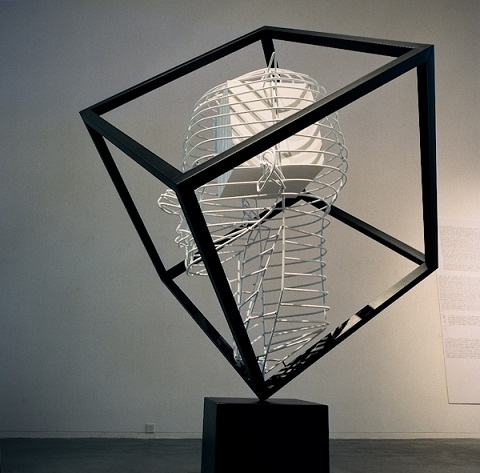
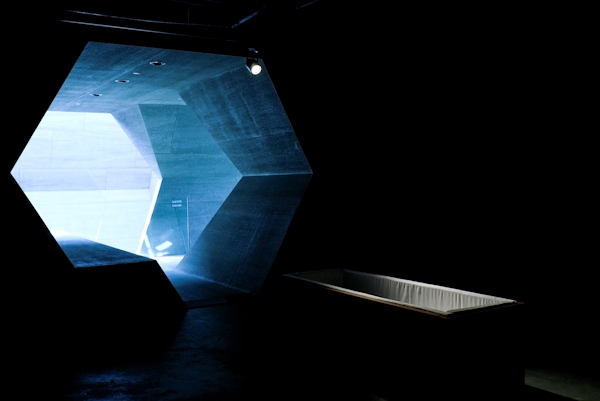
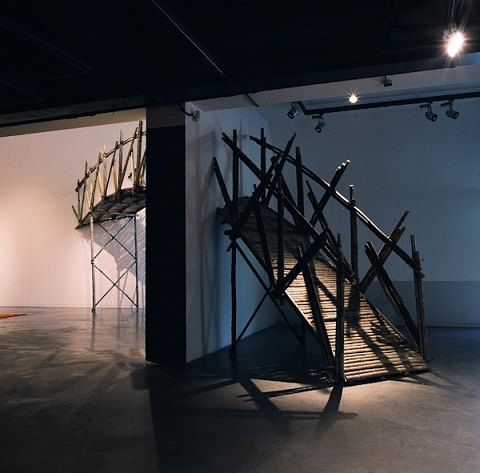
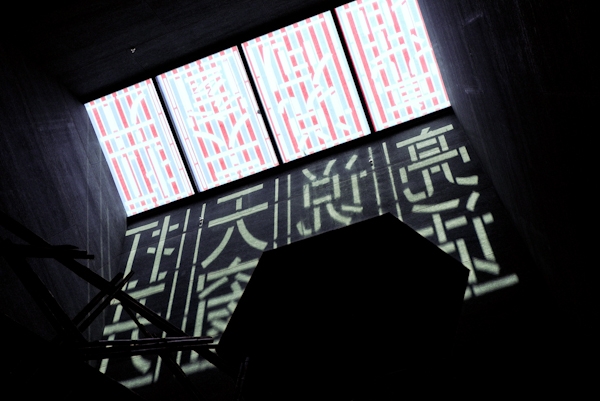
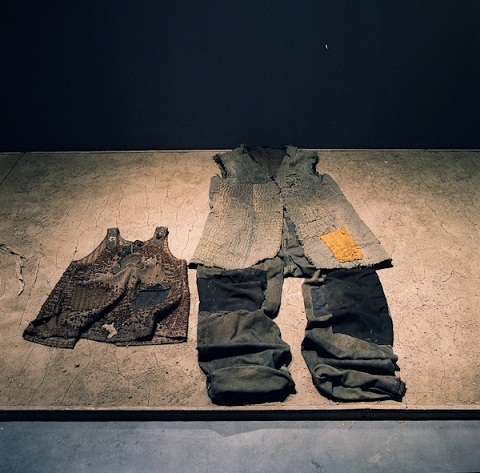
(原文以英文發表,評論《又一山人: 甚麼是明天 - 三十乘三十創意展》。)
The studiously beautiful Ikebana arrangements of dead leaves and flowers in Stanley Wong Ping-pui’s expansive “What’s Next 30x30 Creative Exhibition” encapsulate the moral, creative and aesthetic components of this exhibition.
Rejecting the idea of a retrospective-styled exhibition as too egocentric, Wong says that his vision for the show, which opens this Thursday at Artistree in TaiKoo Place, is to “pull together a group of like-minded people, to make a tribal call” and answer the question, “what is creative, why do we create?”
The exhibition aims to inspire younger people. “It is what you do with creativity that matters. I often struggle with what others do - and we can all do better. If you are visually creative then you cannot only be driven to make money, survive and make your work look beautiful.” The exhibition demonstrates that creative work should have a social conscience, kindness and sensitivity to the world’s fragile environment. There is also a subtle acknowledgement that Wong’s generation of designers has not given enough credence to moral debates around creativity.
An example of this concern is the only collaborative piece in the exhibition, Wong and Japanese Ikebana master Shuko arrange a poignant display of dead flowers to represent renewal and rebirth and as Wong explains, the display is topical: “We bow our hearts for Japan and the many victims of natural disasters.”
Conceived as a two-venue traveling exhibition, the same combination of artists, designers and their artwork was seen in March 2011 at the spacious OCT Art & Design Gallery in Shenzhen. Wong decided three years ago to mark his 50th birthday and his own thirty years in the creative world as a designer, advertising executive and artist to mount such an exhibition. Rather than just exhibiting his own vision of creativity, Wong displays his artwork paired alongside other artists that have inspired him over these years – the result is not an end-point, but to inspire a beginning and “to show the next generation what creativity is.”
To distinguish his own photography and other art projects from his commercial creative work, Wong adopted the pseudonym anothermountainman (又一山人), after Ba Da-shan, a traditional painter who lived sometime between the Ming and Ching Dynasties. Under this guise, Wong has invited a wide-ranging list of 32 friends and mentors, designers and artists to join him in this exhibition, including Taiwan sculptor Ju Ming, Muji designer Kenya Hara, Guangzhou clothes designer Ma Ke, fashion designer Yohji Yamamoto and fellow artists Chan Yuk-keung, Kan Tai-keung, Simon Birch and Nadav Kander.
Wong works professionally with Ma Ke on her own clothing label, Wuyong (Useless), and they share a common interest in the natural disintegration of objects due to age, weather or use. Ma displays images of used, earth-caked clothing worn by farmers and those who work on the land. She explains that, “The food on our plates, the clothes we wear, they all come from this land they have sweated on. And yet the people from cities despise and avoid them...nothing touches and moves me more than their dark, wrinkled faces and outfits covered with earth.” Ma’s own labels sometimes bury their clothing lines in earth to allow nature to add its own patina.
Wong, as a committed Buddhist, recognizes that such distressed physical objects possess an inner purity that should be respected. However, his interest in lan wei lou, or literally ‘rotten buildings’, is motivated by societal changes on the mainland. His lan wei photographs are paired alongside Nadav Kander’s masterly large-format photographs of the Yangtze River, who, while photographing views along the river noted that “demolition and construction were everywhere on such a scale that I was unsure if what I was seeing was being built or destroyed, destroyed or built.”
The mainland’s Lan wei buildings began construction in times of economic prosperity but remained incomplete and abandoned by property developers who ran into financial difficulties. Wong’s lan wei exhibition photographs are tableaux set pieces showing people living in surreal scenes of domesticity in these abandoned buildings. Lan wei, originally a Shanghainese expression, has now entered a mainland-wide vernacular to describe any event or situation suffering a ruinous outcome emanating from greed and excess.
Stanley Wong’s artwork is synonymous with his use of red white blue acrylic material, usually associated with the carry-all red white blue bags seen in Hong Kong and whose aesthetic has been exported around Asia. Red white blue has a particular cultural significance in Hong Kong, but he acknowledges that an early and influential mentor, Yasmin Abad, honed his understanding of cultural appropriateness. Wong worked with Abad on a series of influential television advertisements for the Malaysian oil company Petronas that wished to project its business as being beneficial to the country. The resulting successful “nation in harmony” advertisements developed Wong’s own approach to multicultural creativity and openness to ideas.
John Clang’s Erasure series of photographs continues the exhibition’s consideration of the fragility of life: photographs of his parents and in-laws are carefully faded with an ink eraser and through this action Clang asks, “Mirroring their fast ageing faces is a personal reflection and questioning of my own mortality which digs up a morbid childhood question: what will happen to me when my parents die?”
Wong’s paired artwork in response to Clang is an installed coffin. Designed as a sofa bed that can be converted as his final resting place, Wong wanted to live with his own coffin during his lifetime. It happily sits beside a coffee table and is a comfortable sofa awaiting its ultimate use. Previously exhibited at the Hong Kong Museum of Art and open for the audience to lie in, its display suggested dying to be a rational process of renewal or as the title of the work ventures, “impermanence”.
Obliquely, this installation reflects Wong’s aesthetic approach to design, “I am a perfectionist, who swears by angles and straight lines.” But in his next breathe,
“However, in nature we do not have straight lines!”
Renowned sculpture Ju Ming has a similar skepticism to a reliance on perfectionism, believing that “humankind created the cube, and is framed within it.” The restrictive cube is the ubiquitous shape in the design of buildings, daily objects and in organizational efficiency, however as the exhibition highlights, “Wherever life exists, it always subsists on the fundamental principle of unceasing revolution…(and) revolution entails smooth circularity.” Ju Ming’s sculpture of a head enclosed in a cube simply asks us, to quote the cliché, to see outside the box.
Calligrapher Zheng Hui-ping methodically writes out the Heart Sutra in water on the ground in a Guangzhou park and Wong’s one-hour video captures these slow calligraphic strokes set to Hong Kong composer Kung Chi-shing’s music. Wong explains the calligraphy and its gradual evaporation with Zen reasoning: “Form is emptiness, emptiness is form.”
It seems a perfectly logical answer and resourceful basis for an exhibition posing the question of its young audience, “what’s next?”
Exhibition: Anothermountainman: What’s Next 30x30 Creative Exhibition
Date: 7.7.2011 – 9.8.2011
Venue: ArtisTree, 1/F Cornwall House, TaiKoo Place
Website: http://www.whatsnext30x30.com
A version of this article was originally published in the South China Morning Post on 3 July 2011.
The studiously beautiful Ikebana arrangements of dead leaves and flowers in Stanley Wong Ping-pui’s expansive “What’s Next 30x30 Creative Exhibition” encapsulate the moral, creative and aesthetic components of this exhibition.
Rejecting the idea of a retrospective-styled exhibition as too egocentric, Wong says that his vision for the show, which opens this Thursday at Artistree in TaiKoo Place, is to “pull together a group of like-minded people, to make a tribal call” and answer the question, “what is creative, why do we create?”
The exhibition aims to inspire younger people. “It is what you do with creativity that matters. I often struggle with what others do - and we can all do better. If you are visually creative then you cannot only be driven to make money, survive and make your work look beautiful.” The exhibition demonstrates that creative work should have a social conscience, kindness and sensitivity to the world’s fragile environment. There is also a subtle acknowledgement that Wong’s generation of designers has not given enough credence to moral debates around creativity.
An example of this concern is the only collaborative piece in the exhibition, Wong and Japanese Ikebana master Shuko arrange a poignant display of dead flowers to represent renewal and rebirth and as Wong explains, the display is topical: “We bow our hearts for Japan and the many victims of natural disasters.”
Conceived as a two-venue traveling exhibition, the same combination of artists, designers and their artwork was seen in March 2011 at the spacious OCT Art & Design Gallery in Shenzhen. Wong decided three years ago to mark his 50th birthday and his own thirty years in the creative world as a designer, advertising executive and artist to mount such an exhibition. Rather than just exhibiting his own vision of creativity, Wong displays his artwork paired alongside other artists that have inspired him over these years – the result is not an end-point, but to inspire a beginning and “to show the next generation what creativity is.”
To distinguish his own photography and other art projects from his commercial creative work, Wong adopted the pseudonym anothermountainman (又一山人), after Ba Da-shan, a traditional painter who lived sometime between the Ming and Ching Dynasties. Under this guise, Wong has invited a wide-ranging list of 32 friends and mentors, designers and artists to join him in this exhibition, including Taiwan sculptor Ju Ming, Muji designer Kenya Hara, Guangzhou clothes designer Ma Ke, fashion designer Yohji Yamamoto and fellow artists Chan Yuk-keung, Kan Tai-keung, Simon Birch and Nadav Kander.
Wong works professionally with Ma Ke on her own clothing label, Wuyong (Useless), and they share a common interest in the natural disintegration of objects due to age, weather or use. Ma displays images of used, earth-caked clothing worn by farmers and those who work on the land. She explains that, “The food on our plates, the clothes we wear, they all come from this land they have sweated on. And yet the people from cities despise and avoid them...nothing touches and moves me more than their dark, wrinkled faces and outfits covered with earth.” Ma’s own labels sometimes bury their clothing lines in earth to allow nature to add its own patina.
Wong, as a committed Buddhist, recognizes that such distressed physical objects possess an inner purity that should be respected. However, his interest in lan wei lou, or literally ‘rotten buildings’, is motivated by societal changes on the mainland. His lan wei photographs are paired alongside Nadav Kander’s masterly large-format photographs of the Yangtze River, who, while photographing views along the river noted that “demolition and construction were everywhere on such a scale that I was unsure if what I was seeing was being built or destroyed, destroyed or built.”
The mainland’s Lan wei buildings began construction in times of economic prosperity but remained incomplete and abandoned by property developers who ran into financial difficulties. Wong’s lan wei exhibition photographs are tableaux set pieces showing people living in surreal scenes of domesticity in these abandoned buildings. Lan wei, originally a Shanghainese expression, has now entered a mainland-wide vernacular to describe any event or situation suffering a ruinous outcome emanating from greed and excess.
Stanley Wong’s artwork is synonymous with his use of red white blue acrylic material, usually associated with the carry-all red white blue bags seen in Hong Kong and whose aesthetic has been exported around Asia. Red white blue has a particular cultural significance in Hong Kong, but he acknowledges that an early and influential mentor, Yasmin Abad, honed his understanding of cultural appropriateness. Wong worked with Abad on a series of influential television advertisements for the Malaysian oil company Petronas that wished to project its business as being beneficial to the country. The resulting successful “nation in harmony” advertisements developed Wong’s own approach to multicultural creativity and openness to ideas.
John Clang’s Erasure series of photographs continues the exhibition’s consideration of the fragility of life: photographs of his parents and in-laws are carefully faded with an ink eraser and through this action Clang asks, “Mirroring their fast ageing faces is a personal reflection and questioning of my own mortality which digs up a morbid childhood question: what will happen to me when my parents die?”
Wong’s paired artwork in response to Clang is an installed coffin. Designed as a sofa bed that can be converted as his final resting place, Wong wanted to live with his own coffin during his lifetime. It happily sits beside a coffee table and is a comfortable sofa awaiting its ultimate use. Previously exhibited at the Hong Kong Museum of Art and open for the audience to lie in, its display suggested dying to be a rational process of renewal or as the title of the work ventures, “impermanence”.
Obliquely, this installation reflects Wong’s aesthetic approach to design, “I am a perfectionist, who swears by angles and straight lines.” But in his next breathe,
“However, in nature we do not have straight lines!”
Renowned sculpture Ju Ming has a similar skepticism to a reliance on perfectionism, believing that “humankind created the cube, and is framed within it.” The restrictive cube is the ubiquitous shape in the design of buildings, daily objects and in organizational efficiency, however as the exhibition highlights, “Wherever life exists, it always subsists on the fundamental principle of unceasing revolution…(and) revolution entails smooth circularity.” Ju Ming’s sculpture of a head enclosed in a cube simply asks us, to quote the cliché, to see outside the box.
Calligrapher Zheng Hui-ping methodically writes out the Heart Sutra in water on the ground in a Guangzhou park and Wong’s one-hour video captures these slow calligraphic strokes set to Hong Kong composer Kung Chi-shing’s music. Wong explains the calligraphy and its gradual evaporation with Zen reasoning: “Form is emptiness, emptiness is form.”
It seems a perfectly logical answer and resourceful basis for an exhibition posing the question of its young audience, “what’s next?”
Exhibition: Anothermountainman: What’s Next 30x30 Creative Exhibition
Date: 7.7.2011 – 9.8.2011
Venue: ArtisTree, 1/F Cornwall House, TaiKoo Place
Website: http://www.whatsnext30x30.com
A version of this article was originally published in the South China Morning Post on 3 July 2011.
